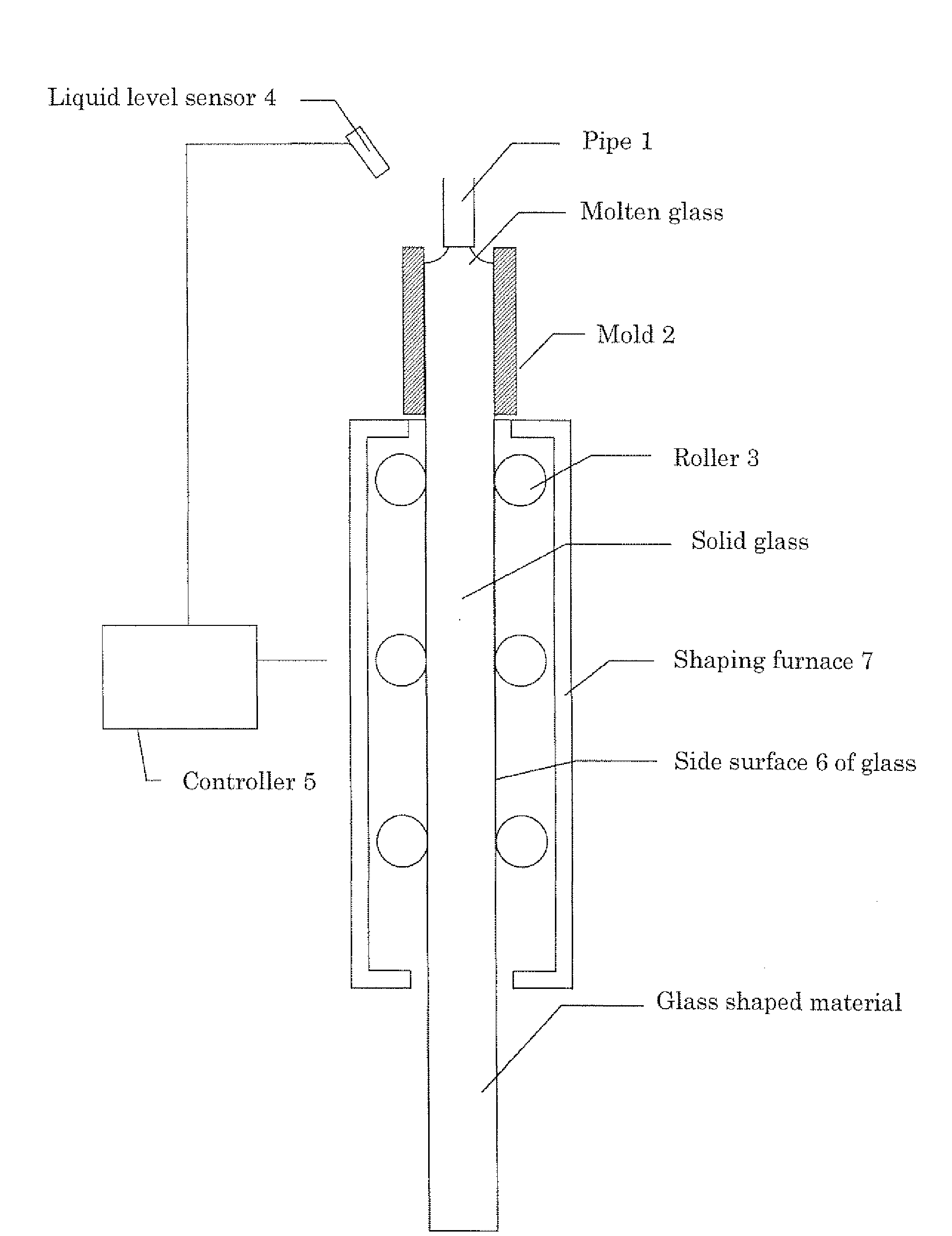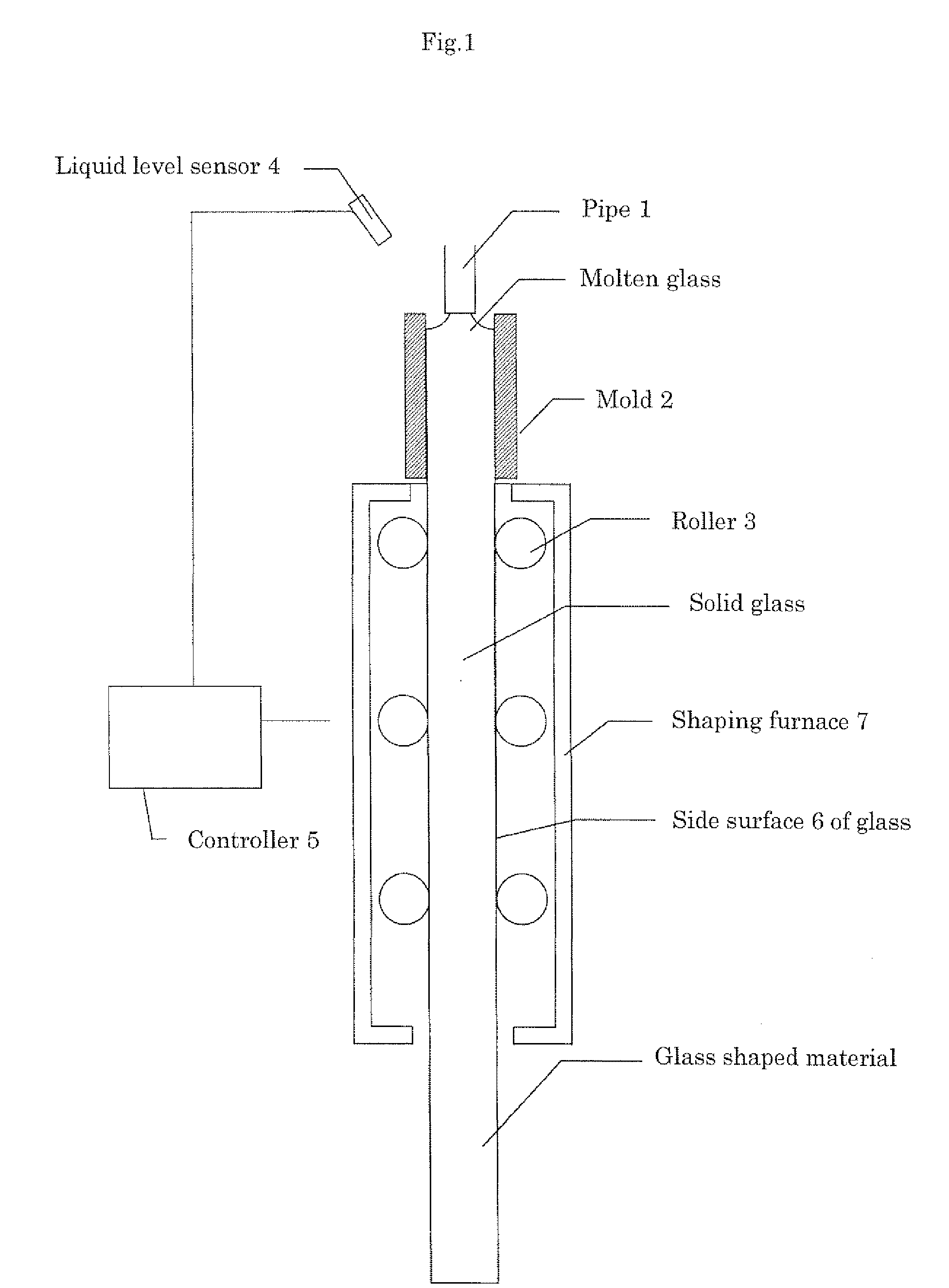Optical glass, glass molded body, optical device and their production methods
- Summary
- Abstract
- Description
- Claims
- Application Information
AI Technical Summary
Benefits of technology
Problems solved by technology
Method used
Image
Examples
example 1
[0181]Raw materials such as oxides, hydroxides, carbonates, nitrates, etc., were selected as required and weighed so as to obtain compositions shown in Tables 1 and 3. In each Example, the thus-prepared raw materials were mixed and then melted in a platinum crucible. Glasses in Examples were melted at 1,300 to 1,450° C. The glasses were stirred and refined, and then each glass was cast on an iron plate to form blocks. Each glass block was placed in a furnace that had been heated to a temperature in the vicinity of its glass transition temperature, and the blocks were annealed to room temperature. Samples for various measurements were cut out from each of the this obtained glass blocks, and measured as follows.
[0182]A sample was measured for a refractive index nd and an Abbe's number νd according to Japan Optical Glass Industry Society Standard JOGIS-01.
[0183]A sample was also measured for a coloring degree according to Japan Optical Glass Industry Society Standard JOGIS-02. Table 1 ...
example 2
[0191]Glass raw materials were weighed so as to give the same optical glasses as those produced in Example 1, and for each glass, they were fully mixed and then introduced into a melting vessel, followed by heating and melting. Then, they were fully refined and homogenized to obtain molten glasses, and each molten glass was respectively caused to continuously flow out from the outlet of a vertically arranged pipe at a constant flow speed and caused to flow into the center of the inlet of a through hole formed in a carbon mold arranged in a position shown in FIG. 1. The through hole of the mold had an inner diameter of φ20 mm and was arranged such that the center axis of the through hole was set in the vertical direction, and the center axis of the pipe and the center axis of the above through hole were arranged to be in agreement with each other. The through hole of the mold had a length of several hundreds millimeters, and a band heater that was not shown was wrapped around the mol...
example 3
[0196]Press-molding glass materials were prepared as follows from those gradually cooled rod-shaped glasses prepared in Example 2. First, a marking line was formed on that portion of a rod-shaped glass side surface which was to be split apart? by a scribing. Then, the rod-shaped glass was inserted into a pressure vessel, and arranged such that the portion where the marking line had been formed was positioned in the center of the vessel. The rod-shaped glass was chucked at the opening portions of the vessel with rubber seals in a manner that the movement thereof in the center axis direction was not restricted, and by injecting water, the vessel was filled with water so as not to internally contain bubbles.
[0197]In this state, the water pressure in the vessel was increased to divide the rod-shaped glass perpendicular to the center axis thereof in the position of the marking line. In this manner, the rod-shaped glass was split apart at predetermined intervals to prepare cut pieces.
[019...
PUM
| Property | Measurement | Unit |
|---|---|---|
| Temperature | aaaaa | aaaaa |
| Fraction | aaaaa | aaaaa |
| Fraction | aaaaa | aaaaa |
Abstract
Description
Claims
Application Information
 Login to View More
Login to View More - R&D
- Intellectual Property
- Life Sciences
- Materials
- Tech Scout
- Unparalleled Data Quality
- Higher Quality Content
- 60% Fewer Hallucinations
Browse by: Latest US Patents, China's latest patents, Technical Efficacy Thesaurus, Application Domain, Technology Topic, Popular Technical Reports.
© 2025 PatSnap. All rights reserved.Legal|Privacy policy|Modern Slavery Act Transparency Statement|Sitemap|About US| Contact US: help@patsnap.com



